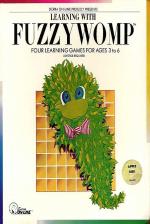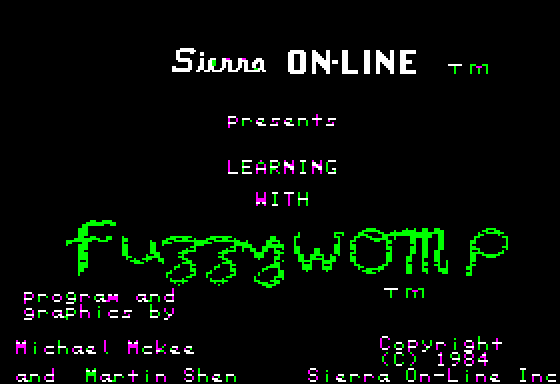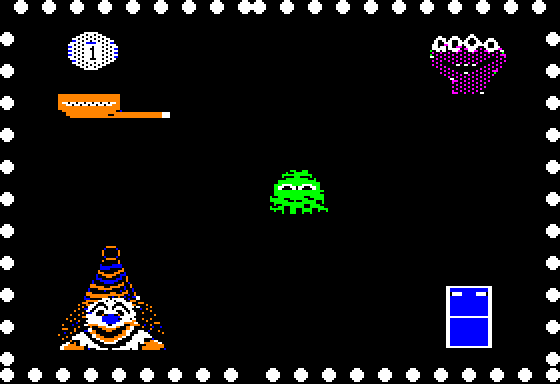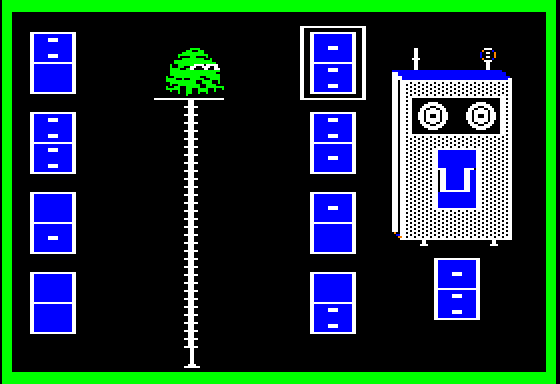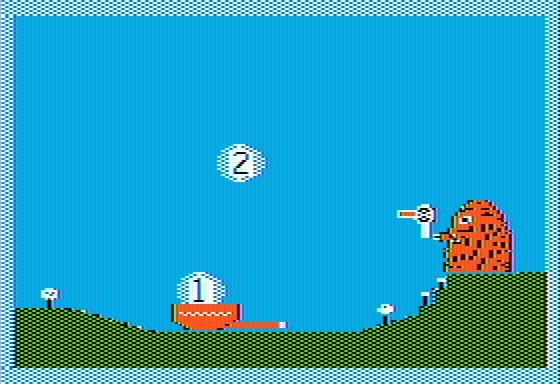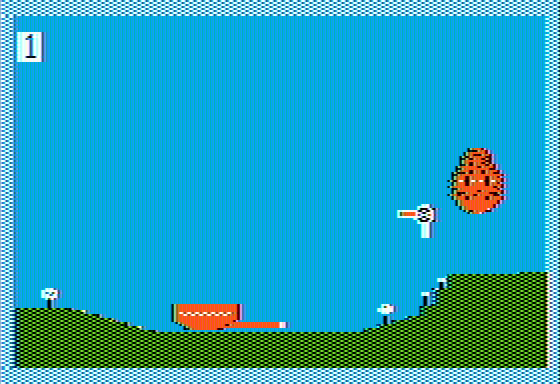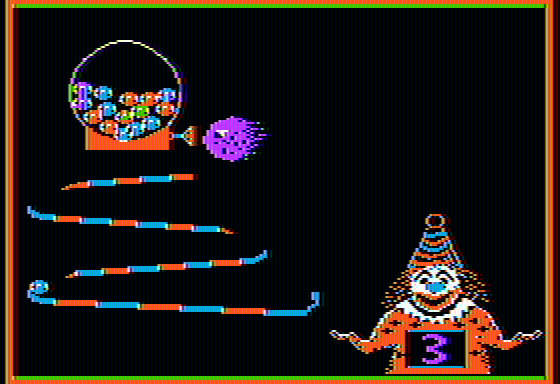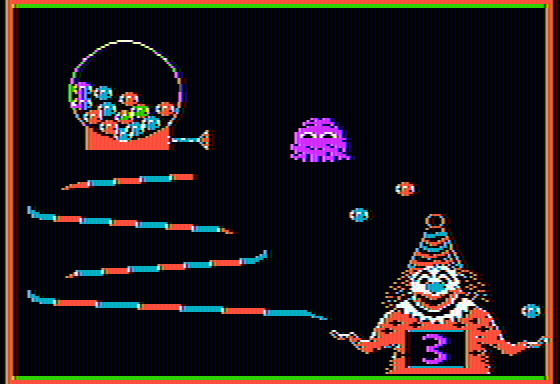
Database
 1st September 1984
1st September 1984
Categories: Review: Software
Publisher: Sierra
Machine: Apple II
Published in Apple User Volume 4 Number 9
Learning With Leeper & Learning With Fuzzywomp
I can always tell when a game is popular with our children. It's not that I have uncanny sixth sense or anything like that - they wake me up at 6:30am to ask if they can play it. Just recently Lorna, our 2.5 year old, has been disturbing my beauty sleep asking for Learning With Leeper.
Leeper is a frog who at least has the sense to avoid busy main roads and crocodile-infested rivers, so maybe it's worth trying to learn something from him.
Learning With Leeper contains four of what Sierra On-Line call "hi-res learning games". As the blurb puts it, educators built in the skill activities and games experts built in the fun.
The four areas of skill focused on are counting, shape matching, eye-hand coordination, and a painting game for "creative play". They are aimed at non-readers, so all control is achieved via the joystick.
The accompanying Parent Guide briefly explains each game. However, it points out that it's not necessary to explain anything to a child who can use a joystick. The Guide does explain that two of the games contain "hidden" levels.
In the shape-matching and eye-hand coordination games, a count is kept of the number of errors made by the child. Depending on how low this count is, higher levels may appear.
The rationale behind hiding levels is that in this way children won't encounter a challenge that is too difficult for them to handle. However, the Guide also points out that if your child is advanced enough to play at the higher levels and doesn't want to go through the lower ones, the Esc key can be used to move straight there.
Sierra On-Line obviously thought the Leeper formula was a good one because they have also released Learning With Fuzzywomp. They certainly make "learning with my teacher" sound mundane, don't they?
Fuzzywomp is a green lump of fluff who "leads children through four pre-school games that prepare them for reading, writing and math". The four activities are pattern matching, counting, number sequencing and eye-hand coordination. This latter is developed through a make-a-monster game.
The other three are multi-level games. Higher levels are again directly accessible via the Esc key, but otherwise hidden.
Since the two packages seem so similar from what I've said, you might wonder why Sierra On-Line has released both of them. They are even aimed at the same age range - three to six years.
However, as with practically all software with any educational value, the ages on the packet are only rough guidelines at best.
My own feeling is that Leeper is more useful for the lower end of the range and even below, as Lorna demonstrates. Fuzzywomp is more useful at the upper end and even above, depending on the child involved.
Although the packages are "educational", they are clearly aimed at the home education market since both contain a Parent Guide. They both display the professional approach to implementation which we would expect from a major software house like Sierra.
Since Leeper was released before Fuzzywomp, it looks a little less "artistic" in its presentation. Martin Shen and Mike McKee - the programmers of Fuzzywomp - obviously polished some of their techniques after they'd worked on Leeper.
My only reservation about these packages is their cost. With the likely retail price being in excess of £20, they must have a very limited market in the UK.
I've tried them out on other children and nobody had any trouble. Once the joystick has been mastered, the children were able to play unsupervised.
Incidentally, have you noticed how hard it is to find computer-naive children these days? Some of the little dears made comments like "Oh, what's *this* computer? It's not like the BBC one at school!"
Some of these also went straight for the Esc key, which jumps out of the program on the BBC machine unless it's trapped by the program.
So much for the attempt to hide various levels. It must be fun being a primary school teacher these days!

